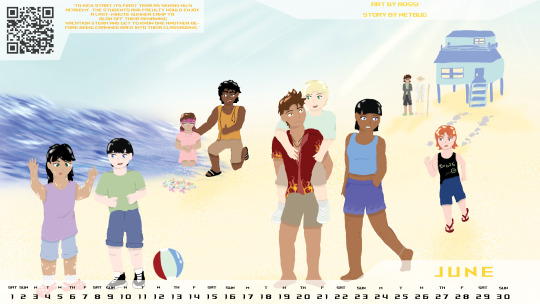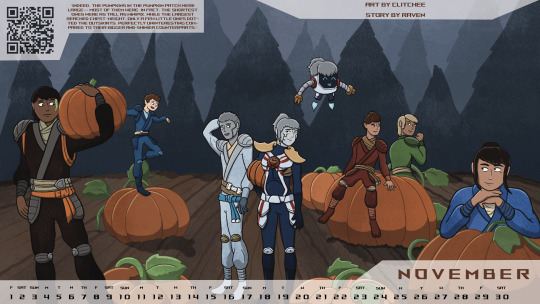#apr 17 2024
Text
Ch211, Spoilers part 2
Artie and Theo had gone back into the water to get Finny. Maybe he thought he'd been left behind, and they had to reassure him they wouldn't do that? 🤷🏻♀️

Finny might have thought he was a goner for sure this time, but Oliver hugs Finny to thank him. Theo isn't wasting much time and gets to thinking about the jars of organs, perhaps the fact they don't have them anymore. What are they going to use as evidence, if they get to the authorities?

Theo says something else, then they look back to the orphanage.

Finny looks at the nearby windpump and is reminded of when he and Snake arrived. Then he starts to cry.

The chapter isn't over just yet. Ultimately, I hope Finny and the others figure out a way to break the windpump and flood the underground facilities, along with any staff that might still be down there.
But....
#black butler#kuroshitsuji#ch211#black butler spoilers#kuro spoilers#kuroshitsuji spoilers#spoilers#finny#finnian#theo#theodore#oliver#artie#mabel#fol orphanage#orphanage#snake#windmill#windpump#wind pump#drainage pump#observation#apr 17 2024#part 2#part two
73 notes
·
View notes
Text
amy ryan i loved you in your aol build interview on central intelligence
0 notes
Text
Apr 17 - meant to resume scanning today but FR released a new dragon breed today; spent most of my time anticipating the patch, waiting through the patch, and then happily figuring out and gening up my first few Dusthides.
Nephew made a big salad for supper, with chicken strips and toasted almonds for protein.
3 notes
·
View notes
Text
4 سنين ولسة بحس إن الفراق لسة حاصل من شهور بسيطة ..
انا حقيقي فقدت هويتي التقديرية للزمن من بعد ما عديت ال18 سنة
ساعات كتير بحس اللغة هي أكتر مرايا مشوشة للمشاعر ، فيه مشاعر كتير جداً ملهاش وصف بالكلام ولا حتى تقريب ليهم او تشبيههم وعشان كدة حقيقي روحي مش لاقية حاجة توصفها بالكلام
يكفيني قول بهاء الدين زهير والصمت ..
أَراكَ هَجَرتَني هَجراً طَويلاً
وَما عَوَّدتَني مِن قَبلُ ذاكا
عَهِدتُكَ لاتُطيقُ الصَبرَ عَنّي
وَتَعصي في وَدادي مَن نَهاكا
وَما فارَقتَني طَوعاً وَلَكِن
دَهاكَ مِنَ المَنِيَّةِ ما دَهاكا
0 notes
Text
The unexpected upside of global monopoly capitalism

I'm touring my new, nationally bestselling novel The Bezzle! Catch me TODAY (Apr 10) at UCLA, then Chicago (Apr 17), Torino (Apr 21) Marin County (Apr 27), Winnipeg (May 2), Calgary (May 3), Vancouver (May 4), and beyond!

Here's a silver lining to global monopoly capitalism: it means we're all fighting the same enemy, who is using the same tactics everywhere. The same coordination tools that allow corporations to extend their tendrils to every corner of the Earth allows regulators and labor organizers to coordinate their resistance.
That's a lesson Mercedes is learning. In 2023, Germany's Supply Chain Act went into effect, which bans large corporations with a German presence from using child labor, violating health and safety standards, and (critically) interfering with union organizers:
https://www.bafa.de/EN/Supply_Chain_Act/Overview/overview_node.html
Across the ocean, in the USA, Mercedes has a preference for building its cars in the American South, the so-called "right to work" states where US labor law is routinely flouted and unions are thin on the ground. As The American Prospect's Harold Meyerson writes, the only non-union Mercedes factories in the world are in the US:
https://prospect.org/labor/2024-04-08-american-workers-german-law-uaw-unions/
But American workers – especially southern workers – are on an organizing tear, unionizing their workplaces at a rate not seen in generations. Their unprecedented success is down to their commitment, solidarity and shrewd tactics – all buoyed by a refreshingly pro-worker NLRB, who have workers' backs in ways also not seen since the Carter administration:
https://pluralistic.net/2023/09/14/prop-22-never-again/#norms-code-laws-markets
Workers at Mercedes' factory in Vance, Alabama are trying to join the UAW, and Mercedes is playing dirty, using the tried-and-true union-busting tactics that have held workplace democracy at bay for decades. The UAW has lodged a complaint with the NLRB, naturally:
https://www.commondreams.org/news/alabama-mercedes-benz
But the UAW has also filed a complaint with BAFA, the German regulator in charge of the Supply Chain Act, seeking penalties against Mercedes-Benz Group AG:
https://uaw.org/uaw-files-charges-in-germany-against-mercedes-benz-companys-anti-union-campaign-against-u-s-autoworkers-violates-new-german-law-on-global-supply-chain-practices/
That's a huge deal, because the German Supply Chain Act goes hard. If Mercedes is convicted of union-busting in Alabama, its German parent-company faces a fine of 2% of its global total revenue, and will no longer be eligible to sell products to the German government. Chomp.
Now, the German Supply Chain Act is new, and this is the first petition filed by a non-German union with BAFA, so it's not a slam dunk. But supermajorities of Mercedes workers at the Alabama factory have signed UAW cards, and the election is going to happen in May or June. And the UAW – under new leadership, thanks to a revolution that overthrew the corrupt old guard – has its sights set on all the auto-makers in the American south.
As Meyerson writes, the south is America's onshore offshore, a regulatory haven where corporations pay minimal or no tax and are free to abuse their workers, pollute, and corrupt local governments with a free hand (no wonder American industry is flocking to these states). Meyerson: "The economic impact of unionizing the South, in other words, could almost be placed in the same category as reshoring work that had gone to China."
The German Supply Chain Act was passed with the help of Germany's powerful labor unions, in an act of solidarity with workers employed by German companies all over the world. This is that unexpected benefit to globalism: the fact that Mercedes has extrusions into both the American and German political spheres means that both American and German workers can collaborate to bring it to heel.
The same is true for antitrust regulators. The multinational corporations that are in regulators' crosshairs in the US, the EU, the UK, Australia, Japan, South Korea and beyond use the same playbook in every country. That's doubly true of Big Tech companies, who literally run the same code – embodying the same illegal practices – on servers in every country.
The UK's Competition and Markets Authority has led the pack on convening summits where antitrust enforcers from all over the world gather to compare notes and collaborate on enforcement strategies:
https://www.eventbrite.co.uk/e/cma-data-technology-and-analytics-conference-2022-registration-308678625077
And the CMA's Digital Markets Unit – which boasts the the largest tech staff of any competition regulator in the world – produces detailed market studies that turn out to be roadmaps for other territories' enforces to follow – like this mobile market study:
https://assets.publishing.service.gov.uk/media/63f61bc0d3bf7f62e8c34a02/Mobile_Ecosystems_Final_Report_amended_2.pdf
Which was extensively referenced in the EU during the planning of the Digital Markets Act, and in the US Congress for similar legislation:
https://www.congress.gov/bill/117th-congress/senate-bill/2710
It also helped enforcers in Japan:
https://asia.nikkei.com/Business/Technology/Japan-to-crack-down-on-Apple-and-Google-app-store-monopolies
And South Korea:
https://www.reuters.com/technology/skorea-considers-505-mln-fine-against-google-apple-over-app-market-practices-2023-10-06/
Just as Mercedes workers in Germany and the USA share a common enemy, allowing for coordinated action that takes advantage of vulnerable flanks wherever they are found, anti-monopoly enforcers are sharing notes, evidence, and tactics to strike at multinationals that are bigger than most countries – but not when those countries combine.
This is an unexpected upside to global monopolies: when we all share a common enemy, we've got endless opportunities for coordinated offenses and devastating pincer maneuvers.

If you'd like an essay-formatted version of this post to read or share, here's a link to it on pluralistic.net, my surveillance-free, ad-free, tracker-free blog:
https://pluralistic.net/2024/04/10/an-injury-to-one/#is-an-injury-to-all
#pluralistic#monopoly#labor#nlrb#germany#harold meyerson#supply chain act#right to work#onshore offshore#uaw#vance alabama#vance#alabama#bafa#mercedes#antitrust#trustbusting
684 notes
·
View notes
Text


By: Christina Buttons
Published: Apr 4, 2024

[ Figure 2: Representative images of Hematoxylin and Eosin-stained sections of testicular tissue biopsied from the testis from GD patients (A) with and (B) without PB exposure. ]
In a groundbreaking study from the Mayo Clinic, a globally recognized leader in medical research and patient care, researchers examined the effects of puberty blockers on testicular development in gender dysphoric male children. Their investigation revealed evidence of mild to severe atrophy in the sex glands of these children, leading the authors to express doubt in the claims of “reversibility” often made about puberty blockers.
The authors assert, “We provide unprecedented histological evidence revealing detrimental pediatric testicular sex gland responses to [puberty blockers].”
This preprint study, not yet peer-reviewed, presents evidence that puberty blockers induce significant cellular changes, impacting testicular development and sperm production in ways that are not fully reversible, with potentially permanent effects on testicular function and fertility. It challenges the longstanding view of puberty blockers as a reversible "pause button" on puberty.
As noted by the researchers of this study, no long-term studies exist for the use of puberty blockers in the context of stopping puberty for gender dysphoric children, and many potential health consequences remain unknown. In particular, the long-term impact on reproductive health is uncertain, making this study critical for filling this knowledge gap.
To address these unknowns, the Mayo Clinic has established the largest collection of testicular samples for patients aged 0-17 years, including those with gender dysphoria who have and have not yet received puberty blocker treatment, creating a database of over 130,000 individual cells for analysis.
Using a novel approach, the research team meticulously analyzed testicular tissue samples from youths undergoing puberty blocker treatment, with those not on puberty blocker treatment serving as controls. This comparison provides important insights into the potential cellular and molecular changes induced by these drugs.
Key Findings
The study utilized the Mayo Clinic's Pediatric Testicular Biobank for Fertility Preservation, which has been recruiting patients primarily from pediatric urology departments since 2015. Researchers analyzed testicular specimens from 87 young individuals (ages 0-17) undergoing fertility preservation surgery for various health reasons. Among these, 16 were gender dysphoric boys between the ages of 10 and 16, all of whom began identifying as transgender girls between the ages of 2 and 15. At the time of surgery, 9 patients (56%) were already on puberty blockers, with exposure ranging from 3 to 52 months. The authors noted that 100% of the 16 children would eventually go on to take them, highlighting “the widespread nature of PB intervention in this demographic.”
Among nine patients treated with puberty blockers, two exhibited unusual features in their testicles upon physical examination. One patient had abnormalities in both testicles, including incomplete development of the tunica albuginea, which is a protective covering around the testicles. The other patient had a right testicle that was difficult to detect.
In one part of the tissue-level analysis, over 400 testicular biopsy samples were analyzed and stained to examine the differences between those treated with puberty blockers and those who were not. Comparisons showed that testicular development in those treated with puberty blockers was abnormal compared to non-treated individuals. There was variability in how individuals responded to puberty blockers, leading to different outcomes in testicular development, including the degeneration of testicular tissues.
The study authors presented a case of a 12-year-old patient who underwent treatment with puberty blockers for 14 months. In this individual, 59% of the sex glands showed complete atrophy, along with the presence of microlithiasis—a condition where small clusters of calcium form in the testicles. This insight suggests that puberty blockers could lead to lasting structural changes. Additionally, research has shown a link between testicular microlithiasis and testicular cancer.

[ D) Representative images of normal (top) and fully atrophied sex gland (bottom). ]
This study also utilized single-cell analysis to investigate the effects of puberty blockers and aging on testicular cell composition. It took a very detailed look at individual cells from the testicles of a 14-year-old who had been on puberty blockers for over 4 years. The study analyzed a total of 130,100 cells, including 11,199 cells from the juvenile puberty blocker-treated patient.
The study observed that over 90% of the cells responsible for sperm production in this patient were stunted at an early developmental stage, unable to progress further. Additionally, it found "pathologically" higher and lower levels of two types of support cells (Sertoli cells) necessary for healthy sperm development. These findings suggest that puberty blockers can disrupt the normal maturation process of cells critical for sperm production.
In another part of the analysis, the authors found distinct cell-specific changes, including altered expression patterns of puberty-associated genes in endothelial cells, due to puberty blocker treatment. The authors believe that these drugs might induce juvenile testicular atrophy in part by disrupting the normal function of testicular endothelial cells.
Another aspect of the study focused on examining the effects of puberty blockers on the genetic activity of early-stage sperm cells, revealing significant changes that could potentially influence their development and fertility. By analyzing the activity of specific genes within these cells, the researchers found that puberty blockers may have caused alterations in gene expression, affecting processes crucial for the normal growth and function of these cells. This analysis suggests that the use of puberty blockers in gender dysphoric youth could have lasting implications for their reproductive health, particularly by impacting the ability of these early-stage sperm cells to mature properly.
Study Impact
Puberty blockers are increasingly used as a treatment for gender dysphoric youth to halt the development of secondary sex characteristics, such as breast development and widening of hips in females, or the growth of facial hair and deepening of the voice in males. Thousands of children in the United States are placed on this medical pathway as part of the gender-affirming model of care, under the presumption that these drugs are safe and fully reversible.
However, many aspects of the long-term consequences of puberty blockers, which have been administered to children off-label in an experimental manner, remain unknown. This study contributes valuable insights into the potential irreversible harm these treatments can cause to bodily and reproductive functions.
Arguably, the most critical finding is the evidence of mild to severe sex gland atrophy in children treated with puberty blockers. This atrophy signifies potential damage or impairment to the structures essential for sperm production, raising serious concerns about the long-term fertility impacts of these drugs for these individuals.
Given the Mayo Clinic's esteemed reputation in the medical and research communities, should the study pass peer review without any issues, its findings will carry significant weight.
Broader Implications
Puberty blockers belong to a group of synthetic gonadotropin-releasing hormone (GnRH) analogues. These drugs act on the pituitary gland to hinder the release of chemical signals that typically trigger the production of estrogen and testosterone. Historically GnRH analogues were used to treat conditions such as prostate cancer, fibroids, and endometriosis and, in some cases, as a measure to chemically castrate sex offenders.
In children, puberty blockers prevent the natural changes of puberty driven by sex hormones and have been used to treat central precocious puberty, a condition where a child begins to sexually mature much earlier than usual. In gender dysphoria, puberty blockers are administered experimentally, lacking long-term testing.
Notably, the U.S. Food and Drug Administration (FDA) has not approved puberty blockers and sex hormones for use in pediatric gender care. No clinical trials have substantiated the safety of these drugs for such non-approved applications and manufacturers of puberty blockers have repeatedly declined to conduct safety trials for their use on this cohort.
While puberty-blocking drugs are often promoted as “safe,” "reversible" and a "pause button" on puberty, these characterizations seem to stem from their approved use for treating central precocious puberty in younger children, not their burgeoning off-label use for managing gender dysphoria in adolescents.
Past studies have indicated possible negative effects on bone density and brain health. There is also a concern that these drugs might solidify gender dysphoria in adolescents, potentially leading them down a lifelong road of biomedical interventions. Following reports in 2016 of suicidal ideation in children administered puberty blockers, the FDA instructed drug manufacturers to include a warning about potential psychiatric issues on the drugs' labels.
Puberty blockers are increasingly administered to adolescents at Tanner Stage 2, the first signs of puberty. Research shows administering puberty blockers at this stage, followed by cross-sex hormones, may result in infertility, sterility, and sexual dysfunction. Furthermore, they inhibit the development of mature male genitalia, making it difficult to create a pseudovagina in the event of a later vaginoplasty due to a lack of sufficient tissue.
The National Health Service England recently announced it would no longer prescribe puberty blockers to youth outside of research settings and closed down its only national clinical service for pediatric gender medicine, following a review that deemed the service "not safe.”
Several European countries, including Sweden, Finland, the UK, Denmark, and Norway have updated their guidelines for youth transition to align with systematic evidence reviews, the gold standard in evidence-based medicine. These reviews concluded that the risks associated with youth transition outweigh any purported benefits. Consequently, these countries have implemented restrictions on medical interventions, prioritizing psychotherapy as a first-line response for minors experiencing gender-related distress.
==
They're sterilizing boys and giving them cancer. When "god" does it, we call him evil. When humans do it, we call it "gender affirming care."
#Christina Buttons#puberty blockers#atrophy#medical scandal#medical malpractice#medical corruption#sterilization#fertility#irreversible#gender affirming care#gender affirming healthcare#gender affirmation#queer theory#gender ideology#gender identity ideology#intersectional feminism#religion is a mental illness
188 notes
·
View notes
Text














Happy holidays, Ninjago fandom!
Here's a little present for you all: the 2024 Ninjago Calendar has now been officially released!
This year we tried a different format so please do let us know your thoughts on it 👀
And, as usual, you can check out the downloadable files here
And also be sure to check out the AO3 collection with the fics for the 2024 calendar!
Thank you so much to all contributors this year! Please be sure to check out their socials and support them!
(see below for contributors on tumblr!)
Cover art: @kumamooko
Jan: @namelysane (fic), @astatine-17 (art)
Feb: @vylad-makes-art & @the-duke-of-kansas (fic), @rottedsoulx (art)
Mar: @crystallizabethine & @roximiscellaneous---artstuffs (fic), @nin-jay-go (art)
Apr: @nalascat (fic), @themaroonlightning (art)
May: @xanketori (fic), @fruitnoot (art)
Jun: @netbug009 (fic), @greenbean-4ever (art)
Jul: @unknownsigils (fic), @starwhipnspin (art)
Aug: @legonerd (fic), @nutellabit (art)
Oct: @fandomsareforlife (fic), @colesstar (art)
Nov: @ravenrambles6229 (fic), @glitcheejelly (art)
Dec: @theodoratheshorty (fic), @ratsarecute4 (art)
#lego ninjago#ninjago#ninjago masters of spinjitzu#ninjago events#ninjago calendar#ninjago calendar 2024
303 notes
·
View notes
Text
"My entire identity has been wiped out" says Saqr Abdel Aal whose immediate family were all killed. On April 22nd, 2024, the Abdel Aal family were targeted in an air strike that resulted in the deaths of at least 17 children and 2 adults. With tears in our eyes too, we were present to capture their painful farewells.
Every night welcomes new martyrs, and every morning is full of grief. When will this end? Rafah is not a safe place for children, women, or men.
We remain on the ground in Gaza, capturing the reality of their community while supporting them via aid missions. It is our greatest dream for Palestine to be free and safe. 💔 🌍✊🏼🇵🇸" from Gaza Sunbirds, 25/Apr/2024:
#palestine#israel#gaza#free palestine#free gaza#columbia university#from the river to the sea palestine will be free#i stand with palestine#rafah#save rafah#human rights#social justice#keep talking about palestine#dont stop talking about palestine
225 notes
·
View notes
Text

Genshin Impact | 2024 Birthday Pictures: Xiao
Text:
Apr 17, Wednesday
Happy Birthday, Xiao!
"Rex Lapis says that flying kites is an activity best enjoyed with friends.
It is very relaxing. A good way to rest."
the crane in the background: ......?
Download Link (Google Drive)
#genshin impact#2024 birthday shorts#character artworks#2024 birthday pictures#xiao#birthday shorts#birthday pictures#boo tao
149 notes
·
View notes
Text
Ch211, Spoilers part 3
When will we ever find out if the kids can flood the facility, destroy it in some other way, or even save anymore of the children? Not this month, and probably not for several months to come.
Because we get a cliffhanger, just like at the end of Baldo and Lau's mission. 😭
We return to Lau's Opium den, where their clothes have been repaired and cleaned, so Seb is removing the Chinese outfit he'd borrowed and putting on his usual butler's uniform. Sorry, but there's no fan service for the Seb simps, unless you are into what's not shown... or gloved hands.

Ran-Mao and other ladies from the establishment show up with several boxes of clothes and at least one box with a hat, maybe two. One hat is from Lock & Co. Hatters, on St. James Street, in London. The rest comes from Hopkins, so that means Nina's still helping them.

They need fresh clothes for their upcoming mission to the resort hotel in Brighton. Sebastian goes to his young master's room to get him ready for travel. Our earl asks something about the clothes from Nina. Or about Nina herself.

I don't know what all they say, but Sebastian does point out that the kid's current outfit reeks of opium (which would never do for where they are headed).

So, time to change clothes. I think we've seen scenes like this a few times throughout the series. It's very methodical and almost ritualistic. In a way, for demon and master, it is a sort of ritual, though.

Are his short pants slightly longer now? 🤔

And off they go.

So! It looks like we are going to Brighton next month, after all.
I was right we'd get the kids struggling to reach the river. Anyone who guessed we'd cut to our earl and Sebastian starting their mission was also right.
A whole new scenery next month.
But when will we ever get back to Finny... or Baldo?
#black butler#kuroshitsuji#ch211#spoilers#kuroshitsuji spoilers#kuro spoilers#black butler spoilers#observation#finny#finnian#top students#fol orphanage#orphanage#cliffhanger#sebastian michaelis#earl phantomhive#our earl#lau#baldo#bard#bardroy#baldroy#opium den#ran mao#brighton#nina hopkins#lock & co hatters#part three#part 3#apr 17 2024
101 notes
·
View notes
Text

Mercedes Moné
AEW Dynamite • Apr. 17, 2024
#mercedes mone#mercedes moné#aewedit#aew#wrestlingedit#aew dynamite#all elite wrestling#tv: dynamite#dynamite: s06e16#candids#ours: edits#maker: r#*
117 notes
·
View notes
Text
MESSENGER; HRJ SMAU

[★]; YOU FIND A PHONE NUMBER WRITTEN ON THE MIRROR OF THE SULIM LIBRARY'S SECOND FLOOR BATHROOM. It's scrawled messily across the glass in erasable expo marker, the handwriting underneath almost closer to hieroglyphics than lettering— and what you thought it read, was 'SEND DUCK PICS FOR A GOOD TIME.'
(You suppose, in hindsight, it was a good thing this person's penmanship was so shit— because if you knew what it really said, you might have never stumbled across the oddly intriguing inbox of one Huang Renjun.)
info;
smau (with many written parts)
renjun x fem!reader
strangers to lovers
quotations means written, no quotes means text!

PART 1: DUCK DEALER
PART 2: PICS OR IT DIDN'T HAPPEN
PART 3: 2AM
PART 4: "COFFEE VS TEA"
PART 5: SPORT BALL
PART 6: "FACE TO FACE"
PART 7: STUBBORN
PART 8: "SHH!"
PART 9: ONE LAST TIME?
PART 10: QUICK THINKING
PART 11: BRIBERY ♥︎
PART 12: "SWITCH UP"
PART 13: BUNNY TAX
PART 14: WRITING ON THE WALL
PART 15: "TWO FACES"
PART 16: STUDDY BUDDY
PART 17: DAYS FLYIN' BY
[and more to come soon...!]

LAST UPDATED: APR 24, 2024
#huang renjun au#renjun smau#nct dream smau#nct smau#nct masterlist#nct dream masterlist#renjun fic#renjun fanfic#renjun text#renjun texts#nct texts#nct dream texts#messenger masterlist#fic: messenger#renjun au#nct au#nct dream au
796 notes
·
View notes
Text
DAY 5903
Jalsa, Mumbai Apr 16/17, 2024 Tue/Wed 12:35 AM
🪔 ,
April 17 .. birthday greetings to Ef Samarth Shashikant from UAE 🇦🇪 .. we wish you as you celebrate your birthday along with the Blog anniversary .. the home of all the Ef .. and our love ever from the Ef Family .. keep well .. ❤️🙏🏻🚩
..
Love ❤️

... and the World of AI stumbles along a path still fresh and unknown, indicative of what may lie ahead, and its eventualities ..
.. as did someone on the Instagram ..
I did not check again but hope it is working and functional ..
let me go there .. just a moment ..
Yaa it wrks .. but no numbers to it attached .. gives an indication .. err , you are passe ..
Ok fine
Good night and love all the same ..

Amitabh Bachchan
101 notes
·
View notes
Text
These Wicked Games Collection
Ongoing (Last updated: Apr. 17, 2024)
An unhinged idea that turned into something more.
Pairing: Loki x Female Reader (OFC)
Ratings/Warnings: Smut, Fluff, playing games,
Summary: It all started with a poker game and a bet. Ever since then, you and Loki have been playing a game to catch the upper hand against each other. Will you win against the God of Mischief?


(⚡ Action Sequence) (💋 Smut) (💢 Angst / Trauma) (🎶 Song Fics) (👑 My favorites)
Poker Face 💋👑
The Chase 💋👑
20 Questions 💋👑
Truth or Dare 💋👑
House of Cards 💋👑
Hide and Seek - Coming Soon

#writing ideas#loki fanfic#loki fluff#mcu#loki laufeyson#loki fandom#loki x you#loki oneshot#loki x reader#loki smut#masterlist#loki imagine#loki x female reader#loki series#marvel fanfic#mochie85 masterlist#loki odinson#loki#loki marvel#mcu loki
296 notes
·
View notes
Text
Humans are not perfectly vigilant

I'm on tour with my new, nationally bestselling novel The Bezzle! Catch me in BOSTON with Randall "XKCD" Munroe (Apr 11), then PROVIDENCE (Apr 12), and beyond!

Here's a fun AI story: a security researcher noticed that large companies' AI-authored source-code repeatedly referenced a nonexistent library (an AI "hallucination"), so he created a (defanged) malicious library with that name and uploaded it, and thousands of developers automatically downloaded and incorporated it as they compiled the code:
https://www.theregister.com/2024/03/28/ai_bots_hallucinate_software_packages/
These "hallucinations" are a stubbornly persistent feature of large language models, because these models only give the illusion of understanding; in reality, they are just sophisticated forms of autocomplete, drawing on huge databases to make shrewd (but reliably fallible) guesses about which word comes next:
https://dl.acm.org/doi/10.1145/3442188.3445922
Guessing the next word without understanding the meaning of the resulting sentence makes unsupervised LLMs unsuitable for high-stakes tasks. The whole AI bubble is based on convincing investors that one or more of the following is true:
There are low-stakes, high-value tasks that will recoup the massive costs of AI training and operation;
There are high-stakes, high-value tasks that can be made cheaper by adding an AI to a human operator;
Adding more training data to an AI will make it stop hallucinating, so that it can take over high-stakes, high-value tasks without a "human in the loop."
These are dubious propositions. There's a universe of low-stakes, low-value tasks – political disinformation, spam, fraud, academic cheating, nonconsensual porn, dialog for video-game NPCs – but none of them seem likely to generate enough revenue for AI companies to justify the billions spent on models, nor the trillions in valuation attributed to AI companies:
https://locusmag.com/2023/12/commentary-cory-doctorow-what-kind-of-bubble-is-ai/
The proposition that increasing training data will decrease hallucinations is hotly contested among AI practitioners. I confess that I don't know enough about AI to evaluate opposing sides' claims, but even if you stipulate that adding lots of human-generated training data will make the software a better guesser, there's a serious problem. All those low-value, low-stakes applications are flooding the internet with botshit. After all, the one thing AI is unarguably very good at is producing bullshit at scale. As the web becomes an anaerobic lagoon for botshit, the quantum of human-generated "content" in any internet core sample is dwindling to homeopathic levels:
https://pluralistic.net/2024/03/14/inhuman-centipede/#enshittibottification
This means that adding another order of magnitude more training data to AI won't just add massive computational expense – the data will be many orders of magnitude more expensive to acquire, even without factoring in the additional liability arising from new legal theories about scraping:
https://pluralistic.net/2023/09/17/how-to-think-about-scraping/
That leaves us with "humans in the loop" – the idea that an AI's business model is selling software to businesses that will pair it with human operators who will closely scrutinize the code's guesses. There's a version of this that sounds plausible – the one in which the human operator is in charge, and the AI acts as an eternally vigilant "sanity check" on the human's activities.
For example, my car has a system that notices when I activate my blinker while there's another car in my blind-spot. I'm pretty consistent about checking my blind spot, but I'm also a fallible human and there've been a couple times where the alert saved me from making a potentially dangerous maneuver. As disciplined as I am, I'm also sometimes forgetful about turning off lights, or waking up in time for work, or remembering someone's phone number (or birthday). I like having an automated system that does the robotically perfect trick of never forgetting something important.
There's a name for this in automation circles: a "centaur." I'm the human head, and I've fused with a powerful robot body that supports me, doing things that humans are innately bad at.
That's the good kind of automation, and we all benefit from it. But it only takes a small twist to turn this good automation into a nightmare. I'm speaking here of the reverse-centaur: automation in which the computer is in charge, bossing a human around so it can get its job done. Think of Amazon warehouse workers, who wear haptic bracelets and are continuously observed by AI cameras as autonomous shelves shuttle in front of them and demand that they pick and pack items at a pace that destroys their bodies and drives them mad:
https://pluralistic.net/2022/04/17/revenge-of-the-chickenized-reverse-centaurs/
Automation centaurs are great: they relieve humans of drudgework and let them focus on the creative and satisfying parts of their jobs. That's how AI-assisted coding is pitched: rather than looking up tricky syntax and other tedious programming tasks, an AI "co-pilot" is billed as freeing up its human "pilot" to focus on the creative puzzle-solving that makes coding so satisfying.
But an hallucinating AI is a terrible co-pilot. It's just good enough to get the job done much of the time, but it also sneakily inserts booby-traps that are statistically guaranteed to look as plausible as the good code (that's what a next-word-guessing program does: guesses the statistically most likely word).
This turns AI-"assisted" coders into reverse centaurs. The AI can churn out code at superhuman speed, and you, the human in the loop, must maintain perfect vigilance and attention as you review that code, spotting the cleverly disguised hooks for malicious code that the AI can't be prevented from inserting into its code. As "Lena" writes, "code review [is] difficult relative to writing new code":
https://twitter.com/qntm/status/1773779967521780169
Why is that? "Passively reading someone else's code just doesn't engage my brain in the same way. It's harder to do properly":
https://twitter.com/qntm/status/1773780355708764665
There's a name for this phenomenon: "automation blindness." Humans are just not equipped for eternal vigilance. We get good at spotting patterns that occur frequently – so good that we miss the anomalies. That's why TSA agents are so good at spotting harmless shampoo bottles on X-rays, even as they miss nearly every gun and bomb that a red team smuggles through their checkpoints:
https://pluralistic.net/2023/08/23/automation-blindness/#humans-in-the-loop
"Lena"'s thread points out that this is as true for AI-assisted driving as it is for AI-assisted coding: "self-driving cars replace the experience of driving with the experience of being a driving instructor":
https://twitter.com/qntm/status/1773841546753831283
In other words, they turn you into a reverse-centaur. Whereas my blind-spot double-checking robot allows me to make maneuvers at human speed and points out the things I've missed, a "supervised" self-driving car makes maneuvers at a computer's frantic pace, and demands that its human supervisor tirelessly and perfectly assesses each of those maneuvers. No wonder Cruise's murderous "self-driving" taxis replaced each low-waged driver with 1.5 high-waged technical robot supervisors:
https://pluralistic.net/2024/01/11/robots-stole-my-jerb/#computer-says-no
AI radiology programs are said to be able to spot cancerous masses that human radiologists miss. A centaur-based AI-assisted radiology program would keep the same number of radiologists in the field, but they would get less done: every time they assessed an X-ray, the AI would give them a second opinion. If the human and the AI disagreed, the human would go back and re-assess the X-ray. We'd get better radiology, at a higher price (the price of the AI software, plus the additional hours the radiologist would work).
But back to making the AI bubble pay off: for AI to pay off, the human in the loop has to reduce the costs of the business buying an AI. No one who invests in an AI company believes that their returns will come from business customers to agree to increase their costs. The AI can't do your job, but the AI salesman can convince your boss to fire you and replace you with an AI anyway – that pitch is the most successful form of AI disinformation in the world.
An AI that "hallucinates" bad advice to fliers can't replace human customer service reps, but airlines are firing reps and replacing them with chatbots:
https://www.bbc.com/travel/article/20240222-air-canada-chatbot-misinformation-what-travellers-should-know
An AI that "hallucinates" bad legal advice to New Yorkers can't replace city services, but Mayor Adams still tells New Yorkers to get their legal advice from his chatbots:
https://arstechnica.com/ai/2024/03/nycs-government-chatbot-is-lying-about-city-laws-and-regulations/
The only reason bosses want to buy robots is to fire humans and lower their costs. That's why "AI art" is such a pisser. There are plenty of harmless ways to automate art production with software – everything from a "healing brush" in Photoshop to deepfake tools that let a video-editor alter the eye-lines of all the extras in a scene to shift the focus. A graphic novelist who models a room in The Sims and then moves the camera around to get traceable geometry for different angles is a centaur – they are genuinely offloading some finicky drudgework onto a robot that is perfectly attentive and vigilant.
But the pitch from "AI art" companies is "fire your graphic artists and replace them with botshit." They're pitching a world where the robots get to do all the creative stuff (badly) and humans have to work at robotic pace, with robotic vigilance, in order to catch the mistakes that the robots make at superhuman speed.
Reverse centaurism is brutal. That's not news: Charlie Chaplin documented the problems of reverse centaurs nearly 100 years ago:
https://en.wikipedia.org/wiki/Modern_Times_(film)
As ever, the problem with a gadget isn't what it does: it's who it does it for and who it does it to. There are plenty of benefits from being a centaur – lots of ways that automation can help workers. But the only path to AI profitability lies in reverse centaurs, automation that turns the human in the loop into the crumple-zone for a robot:
https://estsjournal.org/index.php/ests/article/view/260

If you'd like an essay-formatted version of this post to read or share, here's a link to it on pluralistic.net, my surveillance-free, ad-free, tracker-free blog:
https://pluralistic.net/2024/04/01/human-in-the-loop/#monkey-in-the-middle

Image:
Cryteria (modified)
https://commons.wikimedia.org/wiki/File:HAL9000.svg
CC BY 3.0
https://creativecommons.org/licenses/by/3.0/deed.en
--
Jorge Royan (modified)
https://commons.wikimedia.org/wiki/File:Munich_-_Two_boys_playing_in_a_park_-_7328.jpg
CC BY-SA 3.0
https://creativecommons.org/licenses/by-sa/3.0/deed.en
--
Noah Wulf (modified)
https://commons.m.wikimedia.org/wiki/File:Thunderbirds_at_Attention_Next_to_Thunderbird_1_-_Aviation_Nation_2019.jpg
CC BY-SA 4.0
https://creativecommons.org/licenses/by-sa/4.0/deed.en
#pluralistic#ai#supervised ai#humans in the loop#coding assistance#ai art#fully automated luxury communism#labor
375 notes
·
View notes
Text

Harley Quinn Hair (Hair Commissions)
For feminine frame
Basegame compatible
24 EA swatches + 1 custom swatch
For teen to elder
Custom thumbnail
Hat compatible
Shadow map
Specular map
Normal map
Disallowed for random
Compatible with Universal Hair Overlay
Harley Quinn Hair Ombre Overlay can be found in Brow Ring (Left) category! (25 swatches)

Preview with ombre overlay
Read my Terms of Use before downlodading!
Download here
Public release: 17 Apr 2024
#thesims#the sims 4#thesims4#ts4#sims#sims4cc#ts4 maxis match#ts4 maxis cc#maxis match#thesims4cc#thesims4mm#sims4hair#sims4#simblr#sims 4#the sims#sims 4 female cc#sims 4 female hair#harley quinn#dc#dc universe#harley#quinn
91 notes
·
View notes